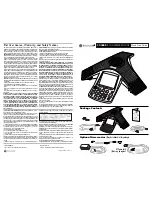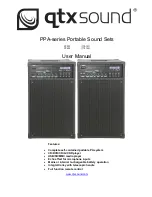
1223
Transfer
Description
Transfer permits an extension user to send an active Intercom or outside call to any other extension in
the system. With Transfer, any extension user can quickly send a call to the desired co-worker. A call a
user transfers, automatically recalls if not picked up at the destination extension. This assures that users
do not lose or inadvertently abandon their transfers. While a transferred call is ringing an extension the
system can optionally play ringback tone or Music on Hold to the caller.
The system allows the following types of transfers:
Screened Transfer
The transferring user announces the call to the destination before hanging up.
Unscreened Transfer
The transferring party extends the call without an announcement.
Extension (Department) Groups Transfer
The Transferring party sends the call to a Department instead of an extension.
Transfer Without Holding
A user presses a busy line key or the same (busy) CAP key and waits for the call to complete. The
system automatically sends them the call when the internal caller hangs up.
Automatic On-Hook Transfer Operation
With Automatic On-Hook Transfer, a transfer goes through as soon as the transferring user hangs up.
For example, extension 104 can answer a trunk, press Transfer, dial 105 and hang up. The system
extends the call to extension 105. Without Automatic On-Hook Transfer, the call would stay on Hold at
extension 104 when the user hangs up. To extend the call, the user at extension 104 would have to
press the Transfer key again before hanging up.
Each method has advantages. Automatic On-Hook Transfer makes transferring calls easier. However,
users have to be more aware of how they handle their calls on Hold. Without Automatic On-Hook
Transfer, extending a call becomes a two-step operation
– but separate from placing calls on Hold.
Prevent Recall of Transferred Call
The Class of Service program allows you to prevent a Transferred call from recalling the originating
extension if the call is not answered.
Transfer Call into Conference/Existing Call
This feature allows either a multiline terminal or single line telephone user with Barge-In ability to transfer
a call into an existing call. This call can be a 2-party call, a Conference call, or a Barge-In Conference.
The system allows Intercom and trunk calls to be transferred into a Conference call. This allows, for
example, an attendant to locate co-workers and then transfer them into an existing telephone meeting.
There is no need for the attendant to locate all the parties at the same time and sequentially add them
into the Conference.
Transfer to Trunk Ring Group Available
It is possible to transfer a trunk call to the trunk defined ring group (defined in Program 22-05-01:
Incoming Trunk Ring Group Assignment). The trunk then rings the defined extensions for the ring group.
Summary of Contents for Univerge SV9100
Page 1: ... SV9100 Features and Specifications Manual Rev 1 2 March 2016 ...
Page 64: ...64 Required Component s None ...
Page 238: ...238 Walking Code Restriction 663 ...
Page 239: ...239 Temporary Code Restriction Override service code be changed 775 ...
Page 285: ...285 Single Line Telephone 1 Lift the handset A fast busy is heard 2 Dial 759 3 Hang up ...
Page 332: ...332 Circular Routing Department Calling Circular Routing CALL 1 CALL 2 CALL 3 CALL 4 ...
Page 406: ...406 Trunk Distinctive Ringing Flow Chart ...
Page 407: ...407 ICM Distinctive Ringing Flow Chart ...
Page 442: ...442 CCIS Standard Calls ...
Page 447: ...447 CCIS VE Standard Calls ...
Page 456: ...456 CPN sent when making a 911 call across CCIS trunks from a terminal ...
Page 461: ...461 CCIS VE 911 Calls ...
Page 637: ...637 Cascade Message Notification Flow Chart 1 ...
Page 638: ...638 Cascade Message Notification Flow Chart 2 ...
Page 639: ...639 Cascade Message Notification Flow Chart 3 ...
Page 655: ...655 Cascade Message Flow Chart 1 ...
Page 808: ...808 DTI U40 ETU Programming Flowchart for ISDN PRI Answering Calls the GCD PRTA Overlap ...
Page 813: ...813 ...
Page 844: ...844 None Related Features None Guide to Feature Programming None Operation None ...
Page 915: ...915 Communications Interface feature for more ...
Page 916: ...916 ...
Page 917: ...917 Operation None ...
Page 948: ...948 Operation Normal call handling procedures for single line telephones apply ...
Page 1015: ...1015 Related Features None Guide to Feature Programming None Operation None ...
Page 1026: ...1026 Operation Refer to Central Office Calls Answering ...
Page 1030: ...1030 Multiline Room Monitoring ...
Page 1031: ...1031 Single Line Telephone Room Monitoring ...
Page 1146: ...1146 SMDR Flowchart Continued ...
Page 1147: ...1147 SMDR Flowchart Continued ...
Page 1371: ...1371 ...
Page 1400: ...1400 To answer off hook signaling 2nd call and 2nd caller disconnect the call NOTE ...
Page 1402: ...1402 SV9100 Features and Specifications Manual NEC Enterprise Solutions ...
















































